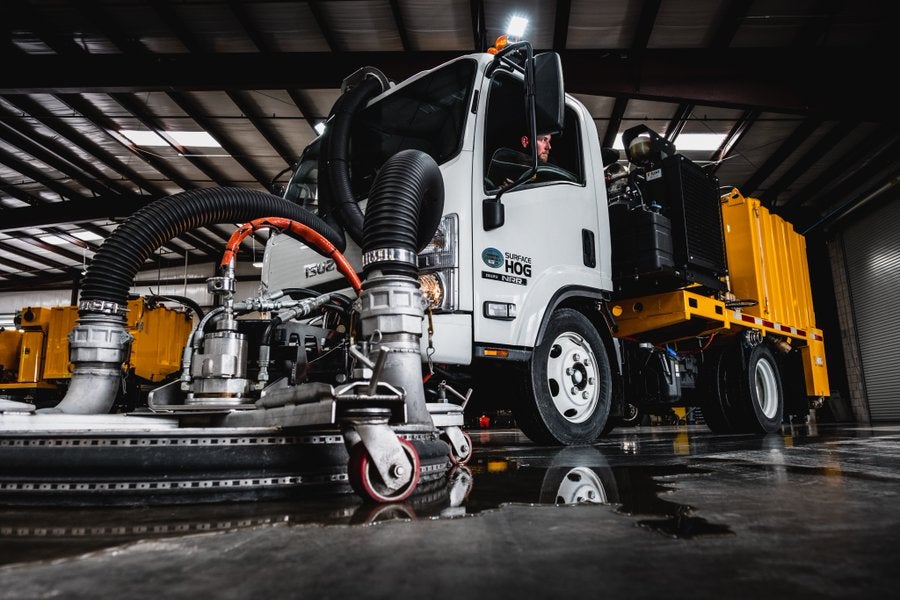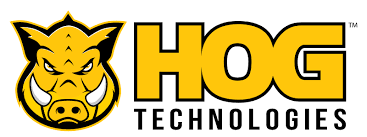
As we face challenges of climate change and environmental pollution on a global scale, businesses across industries are increasingly recognising the importance of sustainability. When it comes to maintaining our roadways and runways, thoughtful design has the power to transform the impact of the equipment that is used.
Equipment provider Hog Technologies has put environmental protection at the forefront of its priorities, demonstrating what’s possible when sustainability is baked into equipment design. Waterblasting offers unparalleled opportunities to overcome the limitations of traditional methods of road maintenance.
- Reduce dust
Pavements and highways are the sites of a range of potentially hazardous materials. When these materials are disturbed by heavy surface-cleaning equipment, they can pose a danger to human health and the environment.
“Methods that create a lot of dust on the road are dangerous to the environment, animals, and people who are breathing it in,” explains Curtis Crocker, director of technical support at Hog Technologies. “One of the main issues on the roadways is silica. If we take it in, it’s very damaging for our lungs and our health.”
Methods of surface cleaning like sand and shot blasting tend to release a large amount of dust that cannot be captured. Using high-pressure water jets, waterblasting wets the particles as they are released and enables them to be vacuumed up, removing them from the environment.
“Water is just a great medium for capturing everything and g holding it, as long as you have a good filtration system,” says Crocker.
Hog Technologies equipment is designed with vacuum recovery and high-grade filtration built in. The equipment includes processes for managing airflow in order to ensure that up to 100% of particles are captured. The high standards of filtration are designed to last: “We manage our filters in a way that ensures that we keep them clean,” explains Crocker. “That sustains the filtration so that the filters continue to work efficiently.”
- Banish slurry
The unique vacuum recovery system integrated into Hog Technologies equipment captures nearly 100% of the water and debris released by the waterblasting process. By filtering the captured material, debris can be dealt with in a straightforward and responsible manner, without leading to slurry or runoff. And with filter membranes made of biodegradable materials, the impact on the environment is minimal.
“Nearly 100% of the water and debris that’s generated, we vacuum it all into a tank that is then filtered to between 70 and 100 microns before we release it. We’re capturing pretty much everything,” says Crocker.
“Some of our competitors are using water as well, but then they dump everything as a slurry. There’s no filtration so they’re not capturing the maximum debris particles, and that’s being released into the environment.”
- Protect road surfaces
Waterblasting helps preserve road texture more effectively than alternative methods like grinding, Crocker explains: “Grinding tends to scar the road surface more,” he says. “In order to remove a marking, you have to remove everything, down to the bottom of the pore space.”
The damage caused by traditional methods of grinding has implications for road safety. By removing friction and digging into the pore space, grinding leaves the road more likely to gather water and freeze, increasing the chance of hydroplaning and vehicle crashes. As well as risking human safety, crashes release toxic materials into the environment. The good news is that advanced grinding technology can reduce the impact of grinding on the road’s surface. Hog Technologies has been the first equipment supplier to develop ‘smart cylinders’, giving operators unparalleled control and precision.
“Using smart cylinders, we can tell to within a 1,000th of an inch where the blade is in comparison to the pavement surface,” Crocker describes. “The computer automatically knows how it needs to adjust the wheels to keep the pavement intact, so we’re not digging into the surface.”
Alternatively, waterblasting can reach into the macrotexture of the road surface to extract the target material without causing damage to the surface, leaving a profile that maintains friction.
- Eliminate chemicals
For removing rubber deposits on runways, harsh chemicals are often used, leading to chemical runoff which ends up in the environment.
Hog Technologies waterblasters use harmless, potable water to remove rubber. As well as this, the company has developed water-recycling technology, meaning that one truck can run on the same water for extended periods.
A responsible approach
Committing to sustainability can be a mindset shift for businesses. Hog Technologies applies its commitment to everything it does, with sustainability integrated at the heart of its designs, rather than as an afterthought.
“We’ve gone to great lengths and put millions of dollars into this,” explains Crocker. “For example, all of our equipment is built to capture debris at the source point as much as possible and separate solids from liquids so they can be handled appropriately.”
To learn more about Hog Technologies equipment, download the whitepaper.


